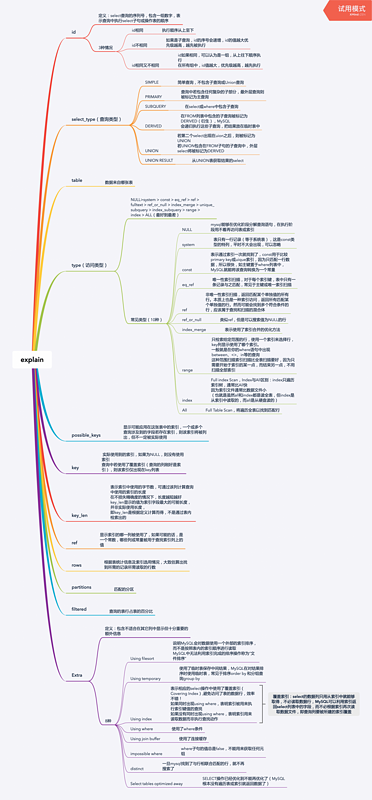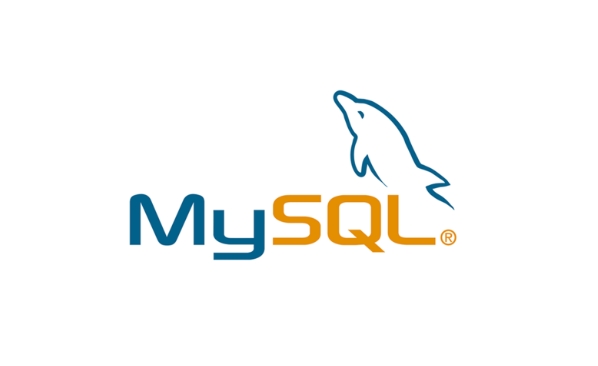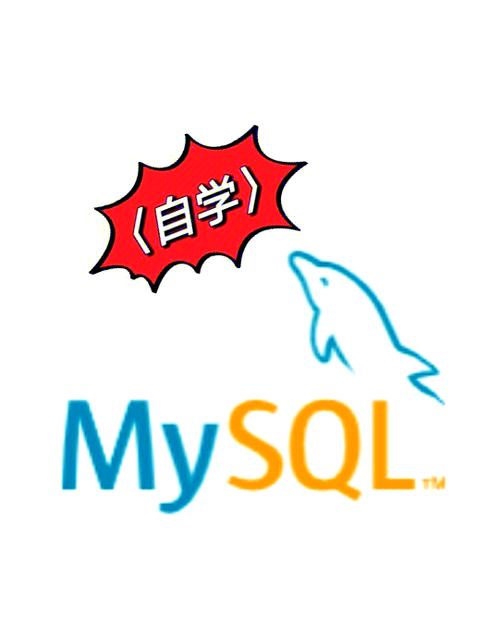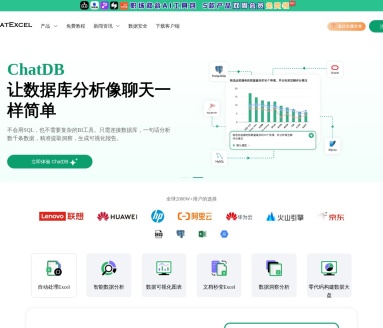[转]一张图彻底搞懂MySQL的 explain
来源:SegmentFault
2023-02-22 14:01:45
0浏览
收藏
本篇文章主要是结合我之前面试的各种经历和实战开发中遇到的问题解决经验整理的,希望这篇《[转]一张图彻底搞懂MySQL的 explain》对你有很大帮助!欢迎收藏,分享给更多的需要的朋友学习~
转自 张德Talk
https://segmentfault.com/a/1190000021458117explain关键字可以模拟MySQL优化器执行SQL语句,可以很好的分析SQL语句或表结构的性能瓶颈。
explain的用途
1. 表的读取顺序如何 2. 数据读取操作有哪些操作类型 3. 哪些索引可以使用 4. 哪些索引被实际使用 5. 表之间是如何引用 6. 每张表有多少行被优化器查询 ......
explain的执行效果
mysql> explain select * from subject where id = 1 \G
******************************************************
id: 1
select_type: SIMPLE
table: subject
partitions: NULL
type: const
possible_keys: PRIMARY
key: PRIMARY
key_len: 4
ref: const
rows: 1
filtered: 100.00
Extra: NULL
******************************************************
explain包含的字段
1. id //select查询的序列号,包含一组数字,表示查询中执行select子句或操作表的顺序 2. select_type //查询类型 3. table //正在访问哪个表 4. partitions //匹配的分区 5. type //访问的类型 6. possible_keys //显示可能应用在这张表中的索引,一个或多个,但不一定实际使用到 7. key //实际使用到的索引,如果为NULL,则没有使用索引 8. key_len //表示索引中使用的字节数,可通过该列计算查询中使用的索引的长度 9. ref //显示索引的哪一列被使用了,如果可能的话,是一个常数,哪些列或常量被用于查找索引列上的值 10. rows //根据表统计信息及索引选用情况,大致估算出找到所需的记录所需读取的行数 11. filtered //查询的表行占表的百分比 12. Extra //包含不适合在其它列中显示但十分重要的额外信息
图片版

文字版
id字段
1. id相同
执行顺序从上至下 例子: explain select subject.* from subject,student_score,teacher where subject.id = student_id and subject.teacher_id = teacher.id; 读取顺序:subject > teacher > student_score

2. id不同
如果是子查询,id的序号会递增,id的值越大优先级越高,越先被执行 例子: explain select score.* from student_score as score where subject_id = (select id from subject where teacher_id = (select id from teacher where id = 2)); 读取顺序:teacher > subject > student_score

3. id相同又不同
id如果相同,可以认为是一组,从上往下顺序执行 在所有组中,id值越大,优先级越高,越先执行 例子: explain select subject.* from subject left join teacher on subject.teacher_id = teacher.id -> union -> select subject.* from subject right join teacher on subject.teacher_id = teacher.id; 读取顺序:2.teacher > 2.subject > 1.subject > 1.teacher

select_type字段
1. SIMPLE
简单查询,不包含子查询或Union查询 例子: explain select subject.* from subject,student_score,teacher where subject.id = student_id and subject.teacher_id = teacher.id;

2. PRIMARY
查询中若包含任何复杂的子部分,最外层查询则被标记为主查询 例子: explain select score.* from student_score as score where subject_id = (select id from subject where teacher_id = (select id from teacher where id = 2));

3. SUBQUERY
在select或where中包含子查询 例子: explain select score.* from student_score as score where subject_id = (select id from subject where teacher_id = (select id from teacher where id = 2));

4. DERIVED
在FROM列表中包含的子查询被标记为DERIVED(衍生),MySQL 会递归执行这些子查询,把结果放在临时表中 备注: MySQL5.7+ 进行优化了,增加了derived_merge(派生合并),默认开启,可加快查询效率
5. UNION
若第二个select出现在uion之后,则被标记为UNION 例子: explain select subject.* from subject left join teacher on subject.teacher_id = teacher.id -> union -> select subject.* from subject right join teacher on subject.teacher_id = teacher.id;

6. UNION RESULT
从UNION表获取结果的select 例子: explain select subject.* from subject left join teacher on subject.teacher_id = teacher.id -> union -> select subject.* from subject right join teacher on subject.teacher_id = teacher.id;

type字段
NULL>system>const>eq_ref>ref>fulltext>ref_or_null>index_merge>unique_subquery>index_subquery>range>index>ALL //最好到最差 备注:掌握以下10种常见的即可 NULL>system>const>eq_ref>ref>ref_or_null>index_merge>range>index>ALL
1. NULL
MySQL能够在优化阶段分解查询语句,在执行阶段用不着再访问表或索引 例子: explain select min(id) from subject;

2. system
表只有一行记录(等于系统表),这是const类型的特列,平时不大会出现,可以忽略
3. const
表示通过索引一次就找到了,const用于比较primary key或uique索引,因为只匹配一行数据,所以很快,如主键置于where列表中,MySQL就能将该查询转换为一个常量 例子: explain select * from teacher where teacher_no = 'T2010001';

4. eq_ref
唯一性索引扫描,对于每个索引键,表中只有一条记录与之匹配,常见于主键或唯一索引扫描 例子: explain select subject.* from subject left join teacher on subject.teacher_id = teacher.id;

5. ref
非唯一性索引扫描,返回匹配某个单独值的所有行 本质上也是一种索引访问,返回所有匹配某个单独值的行 然而可能会找到多个符合条件的行,应该属于查找和扫描的混合体 例子: explain select subject.* from subject,student_score,teacher where subject.id = student_id and subject.teacher_id = teacher.id;

6. ref_or_null
类似ref,但是可以搜索值为NULL的行 例子: explain select * from teacher where name = 'wangsi' or name is null;

7. index_merge
表示使用了索引合并的优化方法 例子: explain select * from teacher where id = 1 or teacher_no = 'T2010001' .

8. range
只检索给定范围的行,使用一个索引来选择行,key列显示使用了哪个索引 一般就是在你的where语句中出现between、、in等的查询。 例子: explain select * from subject where id between 1 and 3;

9. index
Full index Scan,Index与All区别:index只遍历索引树,通常比All快 因为索引文件通常比数据文件小,也就是虽然all和index都是读全表,但index是从索引中读取的,而all是从硬盘读的。 例子: explain select id from subject;

10. ALL
Full Table Scan,将遍历全表以找到匹配行 例子: explain select * from subject;

table字段
数据来自哪张表
possible_keys字段
显示可能应用在这张表中的索引,一个或多个 查询涉及到的字段若存在索引,则该索引将被列出,但不一定被实际使用
key字段
实际使用到的索引,如果为NULL,则没有使用索引 查询中若使用了覆盖索引(查询的列刚好是索引),则该索引仅出现在key列表
key_len字段
表示索引中使用的字节数,可通过该列计算查询中使用的索引的长度 在不损失精确度的情况下,长度越短越好 key_len显示的值为索引字段最大的可能长度,并非实际使用长度 即key_len是根据定义计算而得,不是通过表内检索出的
ref字段
显示索引的哪一列被使用了,如果可能的话,是一个常数,哪些列或常量被用于查找索引列上的值
rows字段
根据表统计信息及索引选用情况,大致估算出找到所需的记录所需读取的行数
partitions字段
匹配的分区
filtered字段
查询的表行占表的百分比
Extra字段
包含不适合在其它列中显示但十分重要的额外信息
1. Using filesort
说明MySQL会对数据使用一个外部的索引排序,而不是按照表内的索引顺序进行读取 MySQL中无法利用索引完成的排序操作称为“文件排序” 例子: explain select * from subject order by name;

2. Using temporary
使用了临时表保存中间结果,MySQL在对结果排序时使用临时表,常见于排序order by 和分组查询group by 例子: explain select subject.* from subject left join teacher on subject.teacher_id = teacher.id -> union -> select subject.* from subject right join teacher on subject.teacher_id = teacher.id;

3. Using index
表示相应的select操作中使用了覆盖索引(Covering Index),避免访问了表的数据行,效率不错! 如果同时出现using where,表明索引被用来执行索引键值的查找 如果没有同时出现using where,表明索引用来读取数据而非执行查找动作 例子: explain select subject.* from subject,student_score,teacher where subject.id = student_id and subject.teacher_id = teacher.id; 备注: 覆盖索引:select的数据列只用从索引中就能够取得,不必读取数据行,MySQL可以利用索引返回select列表中的字段,而不必根据索引再次读取数据文件,即查询列要被所建的索引覆盖

4. Using where
使用了where条件 例子: explain select subject.* from subject,student_score,teacher where subject.id = student_id and subject.teacher_id = teacher.id;

5. Using join buffer
使用了连接缓存 例子: explain select student.*,teacher.*,subject.* from student,teacher,subject;

6. impossible where
where子句的值总是false,不能用来获取任何元组 例子: explain select * from teacher where name = 'wangsi' and name = 'lisi';

7. distinct
一旦mysql找到了与行相联合匹配的行,就不再搜索了 例子: explain select distinct teacher.name from teacher left join subject on teacher.id = subject.teacher_id;

8. Select tables optimized away
SELECT操作已经优化到不能再优化了(MySQL根本没有遍历表或索引就返回数据了) 例子: explain select min(id) from subject;

使用的数据表
create table subject(
-> id int(10) auto_increment,
-> name varchar(20),
-> teacher_id int(10),
-> primary key (id),
-> index idx_teacher_id (teacher_id));//学科表
create table teacher(
-> id int(10) auto_increment,
-> name varchar(20),
-> teacher_no varchar(20),
-> primary key (id),
-> unique index unx_teacher_no (teacher_no(20)));//教师表
create table student(
-> id int(10) auto_increment,
-> name varchar(20),
-> student_no varchar(20),
-> primary key (id),
-> unique index unx_student_no (student_no(20)));//学生表
create table student_score(
-> id int(10) auto_increment,
-> student_id int(10),
-> subject_id int(10),
-> score int(10),
-> primary key (id),
-> index idx_student_id (student_id),
-> index idx_subject_id (subject_id));//学生成绩表
alter table teacher add index idx_name(name(20));//教师表增加名字普通索引
数据填充:
insert into student(name,student_no) values ('zhangsan','20200001'),('lisi','20200002'),('yan','20200003'),('dede','20200004');
insert into teacher(name,teacher_no) values('wangsi','T2010001'),('sunsi','T2010002'),('jiangsi','T2010003'),('zhousi','T2010004');
insert into subject(name,teacher_id) values('math',1),('Chinese',2),('English',3),('history',4);
insert into student_score(student_id,subject_id,score) values(1,1,90),(1,2,60),(1,3,80),(1,4,100),(2,4,60),(2,3,50),(2,2,80),(2,1,90),(3,1,90),(3,4,100),(4,1,40),(4,2,80),(4,3,80),(4,5,100);文中关于mysql的知识介绍,希望对你的学习有所帮助!若是受益匪浅,那就动动鼠标收藏这篇《[转]一张图彻底搞懂MySQL的 explain》文章吧,也可关注golang学习网公众号了解相关技术文章。
版本声明
本文转载于:SegmentFault 如有侵犯,请联系study_golang@163.com删除
 面试官让我5分钟内写一个抢红包程序,我和他说了半小时原理!
面试官让我5分钟内写一个抢红包程序,我和他说了半小时原理!
- 上一篇
- 面试官让我5分钟内写一个抢红包程序,我和他说了半小时原理!

- 下一篇
- 阿里云RDS恢复数据到自建数据库趟坑记录
查看更多
最新文章
-

- 数据库 · MySQL | 1天前 |
- MySQL数值函数大全及使用技巧
- 117浏览 收藏
-

- 数据库 · MySQL | 3天前 |
- 三种登录MySQL方法详解
- 411浏览 收藏
-

- 数据库 · MySQL | 3天前 |
- MySQL数据备份方法与工具推荐
- 420浏览 收藏
-

- 数据库 · MySQL | 4天前 |
- MySQL数据备份方法与工具推荐
- 264浏览 收藏
-

- 数据库 · MySQL | 4天前 |
- MySQL索引的作用是什么?
- 266浏览 收藏
-

- 数据库 · MySQL | 5天前 |
- MySQL排序原理与实战应用
- 392浏览 收藏
-

- 数据库 · MySQL | 1星期前 |
- MySQLwhere条件查询技巧
- 333浏览 收藏
-

- 数据库 · MySQL | 1星期前 |
- MySQL常用数据类型有哪些?怎么选更合适?
- 234浏览 收藏
-

- 数据库 · MySQL | 1星期前 |
- MySQL常用命令大全管理员必学30条
- 448浏览 收藏
-

- 数据库 · MySQL | 1星期前 |
- MySQL高效批量插入数据方法大全
- 416浏览 收藏
-

- 数据库 · MySQL | 1星期前 |
- MySQL性能优化技巧大全
- 225浏览 收藏
-

- 数据库 · MySQL | 1星期前 |
- MySQL数据备份4种方法保障安全
- 145浏览 收藏
查看更多
课程推荐
-

- 前端进阶之JavaScript设计模式
- 设计模式是开发人员在软件开发过程中面临一般问题时的解决方案,代表了最佳的实践。本课程的主打内容包括JS常见设计模式以及具体应用场景,打造一站式知识长龙服务,适合有JS基础的同学学习。
- 543次学习
-

- GO语言核心编程课程
- 本课程采用真实案例,全面具体可落地,从理论到实践,一步一步将GO核心编程技术、编程思想、底层实现融会贯通,使学习者贴近时代脉搏,做IT互联网时代的弄潮儿。
- 516次学习
-

- 简单聊聊mysql8与网络通信
- 如有问题加微信:Le-studyg;在课程中,我们将首先介绍MySQL8的新特性,包括性能优化、安全增强、新数据类型等,帮助学生快速熟悉MySQL8的最新功能。接着,我们将深入解析MySQL的网络通信机制,包括协议、连接管理、数据传输等,让
- 500次学习
-

- JavaScript正则表达式基础与实战
- 在任何一门编程语言中,正则表达式,都是一项重要的知识,它提供了高效的字符串匹配与捕获机制,可以极大的简化程序设计。
- 487次学习
-

- 从零制作响应式网站—Grid布局
- 本系列教程将展示从零制作一个假想的网络科技公司官网,分为导航,轮播,关于我们,成功案例,服务流程,团队介绍,数据部分,公司动态,底部信息等内容区块。网站整体采用CSSGrid布局,支持响应式,有流畅过渡和展现动画。
- 485次学习
查看更多
AI推荐
-

- ChatExcel酷表
- ChatExcel酷表是由北京大学团队打造的Excel聊天机器人,用自然语言操控表格,简化数据处理,告别繁琐操作,提升工作效率!适用于学生、上班族及政府人员。
- 3178次使用
-

- Any绘本
- 探索Any绘本(anypicturebook.com/zh),一款开源免费的AI绘本创作工具,基于Google Gemini与Flux AI模型,让您轻松创作个性化绘本。适用于家庭、教育、创作等多种场景,零门槛,高自由度,技术透明,本地可控。
- 3389次使用
-

- 可赞AI
- 可赞AI,AI驱动的办公可视化智能工具,助您轻松实现文本与可视化元素高效转化。无论是智能文档生成、多格式文本解析,还是一键生成专业图表、脑图、知识卡片,可赞AI都能让信息处理更清晰高效。覆盖数据汇报、会议纪要、内容营销等全场景,大幅提升办公效率,降低专业门槛,是您提升工作效率的得力助手。
- 3418次使用
-

- 星月写作
- 星月写作是国内首款聚焦中文网络小说创作的AI辅助工具,解决网文作者从构思到变现的全流程痛点。AI扫榜、专属模板、全链路适配,助力新人快速上手,资深作者效率倍增。
- 4523次使用
-

- MagicLight
- MagicLight.ai是全球首款叙事驱动型AI动画视频创作平台,专注于解决从故事想法到完整动画的全流程痛点。它通过自研AI模型,保障角色、风格、场景高度一致性,让零动画经验者也能高效产出专业级叙事内容。广泛适用于独立创作者、动画工作室、教育机构及企业营销,助您轻松实现创意落地与商业化。
- 3797次使用
查看更多
相关文章
-
- golang MySQL实现对数据库表存储获取操作示例
- 2022-12-22 499浏览
-
- 搞一个自娱自乐的博客(二) 架构搭建
- 2023-02-16 244浏览
-
- B-Tree、B+Tree以及B-link Tree
- 2023-01-19 235浏览
-
- mysql面试题
- 2023-01-17 157浏览
-
- MySQL数据表简单查询
- 2023-01-10 101浏览



